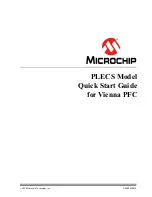
Getting Started
3
SLAU802 – March 2019
Copyright © 2019, Texas Instruments Incorporated
MSP430FR2476 LaunchPad™ Development Kit (LP
‑
MSP430FR2476)
Trademarks
LaunchPad, BoosterPack, Code Composer Studio, EnergyTrace, MSP430, E2E are trademarks of Texas
Instruments.
IAR Embedded Workbench, C-SPY are registered trademarks of IAR Systems.
All other trademarks are the property of their respective owners.
1
Getting Started
1.1
Introduction
The 16-MHz
features 64KB of embedded ferroelectric random access memory
(FRAM), a nonvolatile memory known for its ultra-low power, high endurance, and high speed write
access. Combined with 8KB of on-chip RAM, users have access to 64KB of memory to split between their
program and data as required. For example, a data logging application could require a large data memory
with relatively small program memory, so the memory can be allocated as required between program and
data memory.
Rapid prototyping is simplified by the 40-pin BoosterPack™ plug-in module headers, which support a wide
range of available BoosterPack plug-in modules. You can quickly add features like wireless connectivity,
graphical displays, environmental sensing, and much more. Design your own BoosterPack plug-in module
or choose among many already available from TI and third-party developers.
Free software development tools are also available, such as
TI’s Eclipse-based Code Composer Studio™
and
. Both of these IDEs support
for real-time power profiling and debugging when paired with the MSP430FR2476 LaunchPad
development kit.
1.2
Key Features
•
MSP430™ ultra-low-power FRAM technology based MSP430FR2476 16-bit MCU
•
EnergyTrace technology available for ultra-low-power debugging
•
40-pin LaunchPad development kit standard leveraging the BoosterPack plug-in module ecosystem
•
Onboard eZ-FET debug probe
•
2 buttons and 2 LEDs (1 RGB LED) for user interaction
•
Temperature sensor for the Out-of-Box Experience demo
1.3
What’s Included
1.3.1
Kit Contents
•
1 LP-MSP430FR2476 LaunchPad development kit
•
1 micro USB cable
•
1 quick start guide
1.3.2
Software Examples
•
Out-of-Box software
1.4
First Steps: Out-of-Box Experience
An easy way to get started with the EVM is by using its preprogrammed out-of-box code. This code
demonstrates some key features of the EVM.
1.4.1
Connecting to the Computer
Connect the LaunchPad development kit using the included USB cable to a computer. A green power LED
should illuminate. For proper operation, drivers are needed. TI recommends that you get the drivers by
installing an IDE such as TI's Code Composer Studio IDE or IAR Embedded Workbench IDE. Drivers are
also available at



































